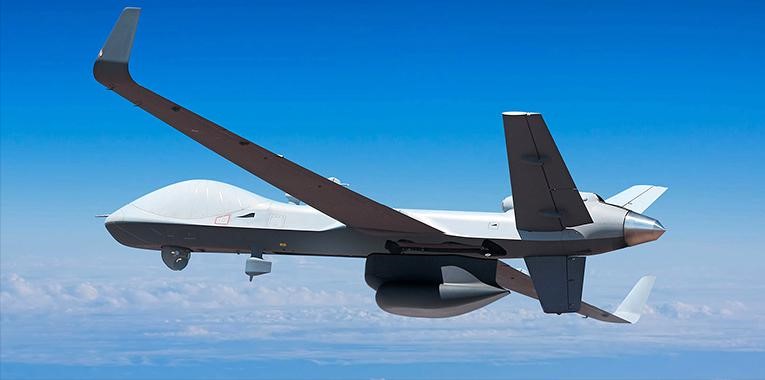Description

Copyright infringement not intended
Context: As India looks to purchase armed Predator Remotely Piloted Aircraft Systems (RPAS) from the U.S., Hindustan Aeronautics Ltd. (HAL) and General Atomics announced at Aero India that the turbo-propeller engines that power the MQ-9B Guardian High Altitude Long Endurance (HALE) RPAS will be supported by the HAL engine division for the Indian market.
Details:
Background:
- HAL has been manufacturing and providing MRO support for TPE 331-5 engines for the past 40 years.
- The Indian Navy operates two MQ-9B Sea Guardians taken on lease in 2020.
- A larger deal for 30 armed MQ-9Bs, 10 for each Service, is pending.
- Last year, the Defence Ministry ordered a reassessment of the requirements of the deal estimated at around $3 billion.
.jpeg)
HALE:
- High-altitude long-endurance (HALE) unmanned aerial vehicle (UAV) generally refers to UAVs flying at an altitude of 15–20 km with a low speed.
- In other words, it needs to realize long-distance flight in an environment with thin air and low temperature.
- There are many ways to achieve long endurance, such as using sustainable energy sources (e.g., solar energy), increasing the energy density of energy storage (e.g., solid hydrogen), and improving power conversion efficiency.
What are Remotely-piloted aircraft system (RPAS)?
- ICAO defines this term as“A set of configurable elements consisting of a remotely-piloted aircraft, its associated remote pilot station(s), the required command and control links and any other system elements as may be required, at any point during flight operation.”
- In practical terms, a small RPAS can be visualized as having these configurable elements and characteristics:
- An RPA;
- Human-operated remote pilot station(s)usually located on the ground or on a ship, but which may be aboard another airborne platform;
- A command and control system— sometimes called a communication, command and control system — that includes data links and other system elements (e.g., instruments and transponders on satellites and/or terrestrial cable networks) that connect the remote pilot station(s) to the RPA.

Civilian Applications of RPAS:
Examples of RPAS operators’ missions are:
- Security surveillance;
- Emergency response, including involvement in search and rescue (SAR), and delivery of medications and automated external defibrillators (AEDs);
- Enabling data communication and broadcast of information in remote areas;
- Small package and bulk cargo transport;
- Visual, spectral and thermal examination of structures;
- Monitoring of linear network infrastructure such as railway tracks, power lines and pipelines;
- Photography, videography, cinematography and cartographic survey;
- Agricultural fertiliser and chemical application;
- Aircraft external maintenance inspection and airport infrastructure inspection; and,
- Atmospheric research and documentation of global warming effects.


https://epaper.thehindu.com/ccidist-ws/th/th_delhi/issues/25283/OPS/GF2ASPKCR.1.png?cropFromPage=true











